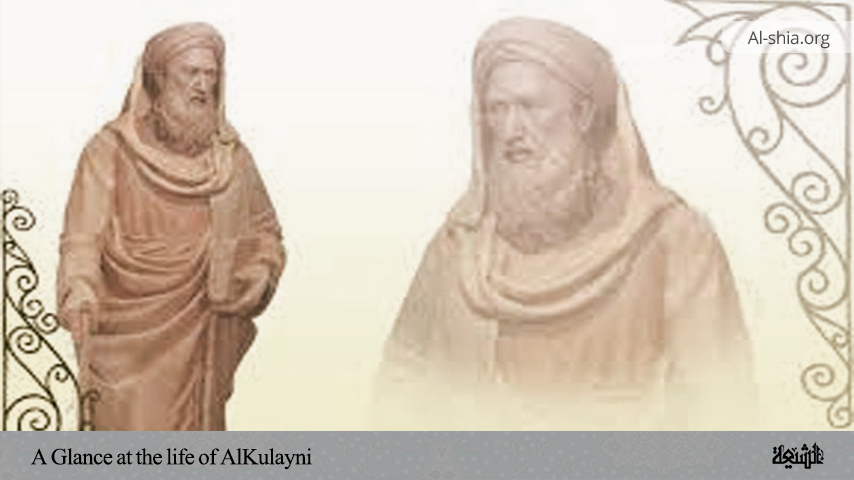Based on the consensus of all Muslims, one of the necessities and conditions for the validity of the five daily (obligatory) prayers is purity (Taharah). One for whom the obligatory bathing (Ghusl) is not necessary can accomplish purifying by ablution.
Some actions and conditions of the ritual ablution, like whether to wash or rub the feet, are subject to controversy. Most Sunni scholars believe that washing the feet in ablution is compulsory, but the verdict of all Shia jurisprudence is to rub them. In case rubbing is incumbent, should it be done all over the foot? Or is it enough to rub the feet from the toes to the ankles?
At the outset of this discussion, we direct the attention of the gentle readers, and mostly our Sunni brethren, to some points:
A) Most of the beliefs and rituals which are now considered Islamic certainties have not been so at the time of the Companions, their followers and even one or two generations after them. In fact, there has been controversy over these issues among scholars and jurisprudents in the past, but due to political and practical concerns, some of the opinions (and sometimes even one opinion) have dominated others over time.
Clearly, in such a situation, scholars and thinkers may be frightened by the dominance of an opinion and attempt to find reasons and argumentation, though unjustified, for it. The reason behind this is that they have been brought up on respecting that opinion and have accustomed to it. Later, they faced the same thing in their exchanges with their fellows in society.
Leaving such an opinion is hence very difficult since it is deeply internalized in one’s soul and mind. But reason and justice require that we save ourselves from these jams and try to think logically and independently and choose accordingly. Our present discussion is one of the clearest evidence of this issue.
B) The main source for the inference of religious rulings is the Holy Quran which is away from any untruth and everything should refer to it. If a tradition or some traditions are against the Word of Allah, they are surely invalid and should be ignored. So, if traditions were contrary to each other, (i.e. some were in accord with Allah’s Word and some against it), those in apparent accordance with Quran are certainly preferable.
Of course, if the traditions in apparent contrast with Quran are not opposed by other traditions, some people may use them for the interpretation of Allah’s Book, leaving the face of the Quran.
However, it is not the case if there are other opposing traditions since the proof of a tradition is lost due to the contradiction to other traditions and therefore there remains no proof for rejecting the face of the Quran. The Holy Prophet (a.s) says in this regard:
“Compare my traditions with the Word of Allah. If it was in accord with the Quran, (you will find out that) it is really my statement.” (1)
C) Shia jurisprudents refer to traditions quoted from the Ahl al-Bayt for proving the rulings of ablution, like other rulings. Based on Thaqalayn tradition (i.e., Hadith of two precious things) and other traditions, they not only take traditions from the Ahl al-Bayt (a.s) as proof but also prefer them to other traditions, as acknowledged by some Sunni scholars.
For instance, when Hakim Nayshapuri speaks of the most valid documents and the best narrator chains, he mentions some of the Companions but first of all he says: (2) “The most valid tradition narrated from the Ahl al-Bayt (a.s) is Ja’far Ibn Muhammad (Imam Sadiq) from his father (Imam Baqir), from Ja’far’s grandfather (Imam Sajjad) from Ali (a.s), provided that the narrator from Ja’far is a trustee.”(3)
About the document of the famous tradition known as Salsalat Al-Dhahab (Golden Chain) (4) narrated by Imam Reza (a.s), from his father from his grandfathers from the Messenger of Allah (a.s), Ahmad Ibn Hanbal says, “If this document is read to an insane, he will be surely healed.”(5)
Our emphasis here is on the traditions quoted by the Sunni, but some of the traditions quoted by the Ahl al-Bayt (a.s) from the Holy Prophet are mentioned, too. Our purpose is for our Sunni brothers in this age to know, like their great scholars in the first centuries after the emergence of Islam, that these rulings are not especially for the Shia; rather they can be obtained through their hadith sources.
Also some of the Companions, their followers and some others who are accepted by both the Sunni and the Shia believe in these rulings and verdicts, too. It is hoped that these scientific discussions make the two Islamic sects approach each other, preventing the adversaries of Islam and the Quran from enjoying their differences.
This illumination may, in God’s favour, make those who are of an opinion and do not consider taqlid as limited to “the four Islamic schools”, choose this opinion, as did their previous scholars.
D) The contradiction seen among the traditions are of different sources, not just due to fabrication and wrong attribution to the Messenger of Allah (a.s), though alteration is the main source. Qurtubi has some viewpoints about the traditions’ quotation and alteration. He says,
“One should not heed what liars and fabricators have said about the virtue of reciting some Quranic chapters and other deeds. The liars have fabricated these for different purposes. Some of the apostates by doing these aimed at making doubt among the people and some others did so as a result of their whims. (6)
As Nuh Maruzi fabricated some traditions in virtue of the Holy Quran’s chapters one by one. When he was asked about his intention, he answered, “I saw people turning away from the Quran and going toward the jurisprudence of Abu Hanifah and Maghazi of Ibn Ishaq, so I fabricated these traditions for God’s sake!” Qurtubi then continues, “Avoid what Islam’s opponent and miscreants have established for encouragement or warning! The most harmful of these is a group known as being ascetics who supposed that they fabricated traditions for God’s sake. People trusted them and hence accepted what they fabricated. They were misled and led people astray, too.” (7)
Nevertheless, contradiction is found in some traditions since the narrator may not have noticed situational (8) or textual (9) signs, or if he has noticed them, he has not mentioned them because the signs had been clear to him.
For example, he has brought a conditional rule as full or a full one as conditional. Some other sources of contradiction can be thought of which are included in Dirayah and Usul books in detail.
E) As understood from reference books of traditions, prayer and ablution were stipulated in the religion from the beginning of the Prophet’s Mission since the Messenger of Allah (a.s) prayed along with Ali (a.s) and Khadijah (a.s) (10).
Ibn Majah in his Sunan, Hakim in Mustadrak and Tabari in his Tarikh quote Abbad Ibn Abdullah as saying that he heard Ali (a.s) saying:
“I am God’s servant and the brother of His Messenger, and I am the greatest truthful. No one would claim this after me except a liar. I prayed seven years before other people did.” (11)
Though prayer had been included in the religion from the beginning, there is consensus that the Ablution Verse (12) has been descended in Medina,(13) as this verse is in Al-Ma’ida Chapter, which was revealed in Medina. (14)
Of course, as is evident from some of the verses in this Chapter, some verses of it have been revealed toward the end of the Prophet’s life. Keeping this in mind, there is a likelihood that at first, ablution was different regarding its conditions and details, and after the revelation of the honourable verse, the previous tradition about ablution was abrogated. Some traditions imply the same concept, too.
Therefore by rejecting some traditions because of their contradiction, we do not intend to deny them totally. Perhaps the narrators have quoted an abolished ruling headless of its being abolished or heading its clear abolition. With regard to the above-mentioned facts, we present the honourable verse of ablution (wudu) and dry ablution (tayammum) and discuss them in detail.
Almighty God says:
O you who believe! when you rise up to prayer, wash your faces and your hands as far as the elbows, and rub your heads and your feet to the ankles; and if you are under an obligation to perform a total ablution, then wash (yourselves) and if you are sick or on a journey, or one of you come from the privy, or you have touched the women, and you cannot find water, betake yourselves to pure earth and rub your faces and your hands therewith, Allah does not desire to put on you any difficulty, but He wishes to purify you and that He may complete His favour on you, so that you may be grateful. (15)
NOTES:
________________
1. Kanz al-Ummal, Al-Risalah, No. 992; Al-Jami’ Al-Saghir, 1st ed., Dar Al-Fikr 1401, No. 1151.
2. Ma’rifa Ulum Al-Hadith, p. 54.
3. In these cases, the tradition is narrated from Imam Sajjad (a.s) from Imam Husayn (a.s) from Ali (a.s).
4. A divine tradition in which the Exalted God states: “The phrase “There is no God but Allah,” is My fort. Whoever comes to My fort will be safe from My chastisement.”
5. Ibn Hajar Asqalani, Al-Sawa’iq Al-Muhriqah, p. 122.
6. They supposed they fabricate traditions for God’s sake.
7. Tafsir Qurtubi, 2nd ed. Dar Al-Shu’ab, Egypt 1372, Vol. 1, p. 78.
8. Situational signs include the state of people involved in question and answer, and conditions of time and place while asking and answering. In the present discussion, the issue at stake is that the narrator may not have attended to these conditions while narrating the tradition, (Editor).
9. Textual signs are words and phrases in traditions that bear special meaning. The issue at stake here is that the narrator may have narrated the tradition headless of these words’ sensitivity and special connotation, not bringing the original words (Editor).
10. Sirah by Ibn Husham, Vol. 1, p. 260; Tarikh Ya’qubi, Vol. 2, p. 23.
11. Sunan Ibn Majah, Dar Ihya; Al-Turath Al-Arabi 1395, Vol. 44 (in the same page it is quoted from Al-Zawa’id, “This document is true.” Mustadrak, Dar Al-Ma’rifa, Beirut 1406, Vol. 3, p. 112; Tarikh Tabari, Dar al-Ma’arif, Egypt, Vol. 2, p. 310.
12. The Holy Quran 5:6
13. Jalal Al-Din Suyuti, Al-Itqan fi Ulum Al-Quran, Vol. 1, p. 133.
14. Ibid.
15. The Holy Quran 5:6






